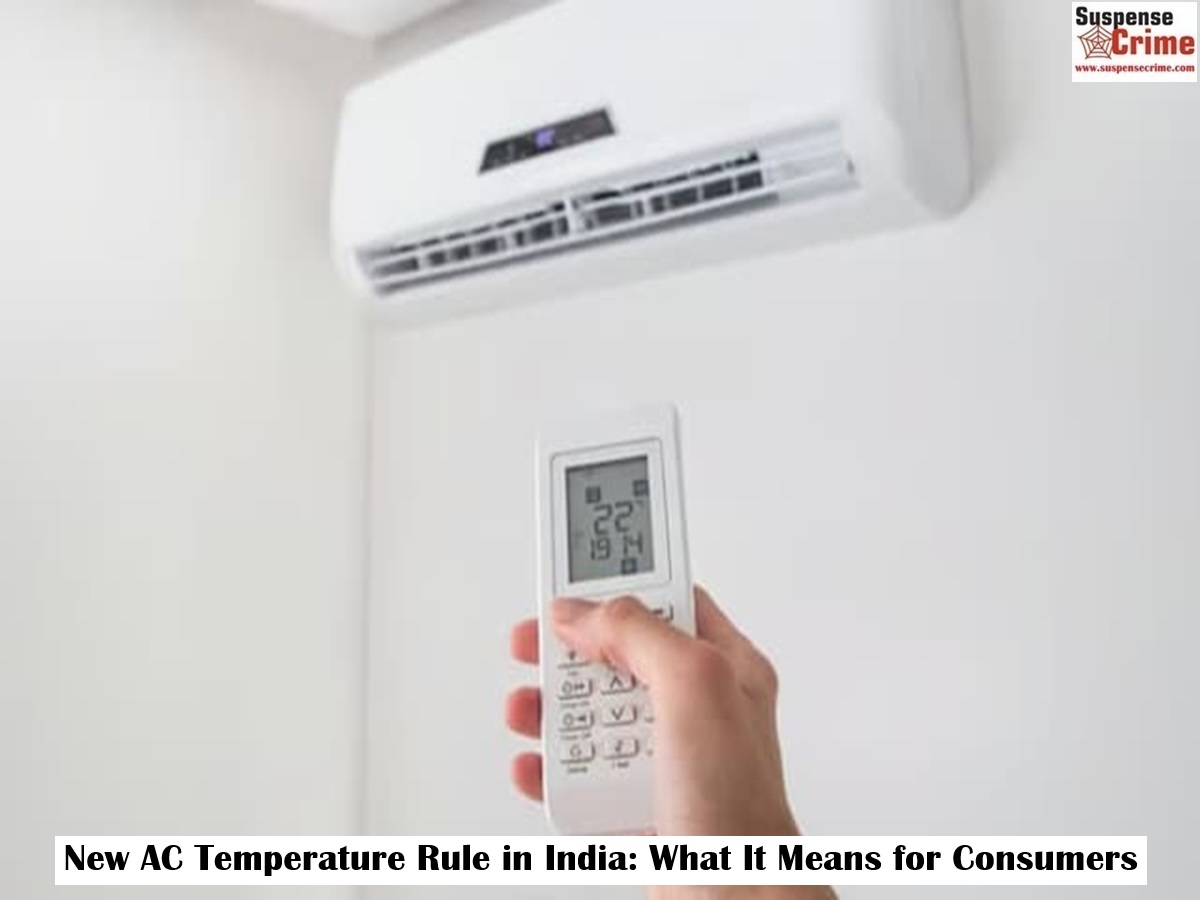
Suspense crime, Digital Desk : As reported, Union Minister Manohar Lal Khattar has confirmed a new regulation that sets air conditioner temperature limits for the whole of India. This regulation will now set the temperatures for operation between a minimum of 20°C and a maximum of 28°C, a significant change from the current setting which allows users to set temperatures as low as 16°C and as high as 30°C.
This marks a move away from voluntary guidelines such as the Bureau of Energy Efficiency’s 2018 recommendation of keeping ACs at 24 degrees to a regulation that will be enforced for both homes and businesses.
What the Changes Mean for Consumers
The new regulations state that
Resetting cooling and heating functions to below 20°C and above 28°C will not be possible.
Manufacturers will be required to update devices or redesign them.
Users will not be able to change settings past the restriction range.
This policy is anticipated to apply to all new AC models, in addition to possibly requiring retrofitting for older models.
The Reason Behind the Change
With rising temperatures, air conditioning is becoming a necessity in India, and electricity demand is skyrocketing. India has seen an increase in electricity demand, and people have the tendency to set their ACs to chilling temperatures of 20°C to 21°C.
The advantages provided by the new policy include:
Reduction in the cost of electricity for households and enterprises.
Coal-based power plants will have a decrease in greenhouse gas emissions.
Enhanced health care and indoor air quality.
Promotes conservation and wiser use of energy.
As per the Bureau of Energy Efficiency (BEE):
A rise in AC temperature by 1°C will reduce electricity consumption by close to 6%.
Electricity usage can be reduced by 24% from consumption at 20°C with the raising of temperature to 24°C.
It is believed by professionals that a range of 24°C–26°C is an ideal temperature zone which can be considered for most settings, lower temperatures are often unnecessary and in many cases, unhealthy.
How India Compares With Global AC Regulations
Coming up with an India specific rule showcases a lot of ingenuity as it is one of the most comprehensive in the world. Here’s how it stacks up:
Japan: Suggests 28°C in office settings.
Spain: Establishes a minimum of 27°C in publicly accessible buildings.
China & Italy: Enforce temperature controls primarily in government facilities.
Australia, U.S., Belgium: Focus on energy efficiency but do not have temperature control regulations.
The uniqueness of India’s implementation is that it covers private, commercial, and public use.

 Share
Share



